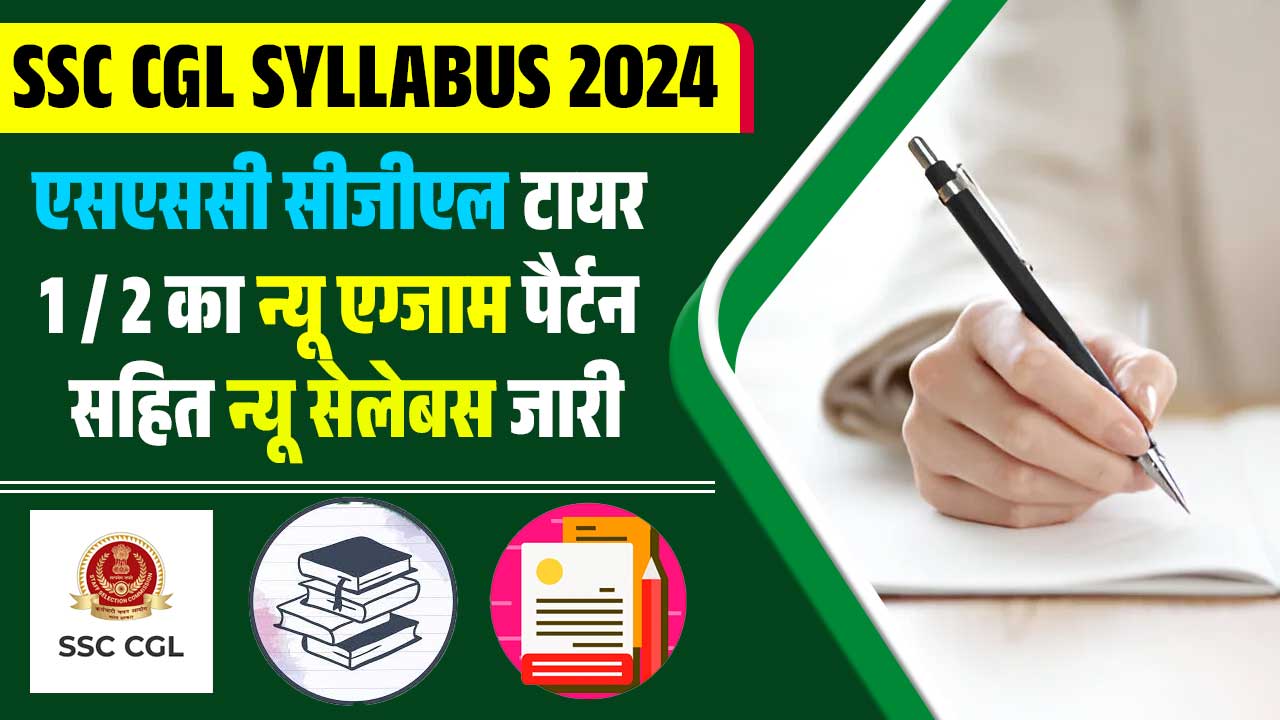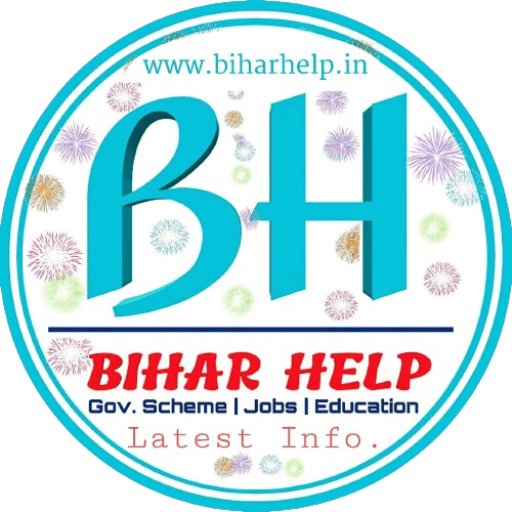SSC CGL Syllabus 2024: यदि आप भी कर्मचारी चयन आयोग के Combined Graduate Level Examination की भर्ती परीक्षा मे बैठने वाले है तो आपको अपार सफलता प्राप्त करने के लिए SSSC CGL Syllabus 2024 के बारे मे जानना बेहद जरुरी है और इसीलिए हम आपको इस आर्टिकल में, विस्तार से इस जानकारी प्रदान करेगे।
जाने इस पोस्ट में क्या क्या है


हम, अपने सभी अभ्यर्थियो को बता देना चाहते है कि, SSC CGL Syllabus 2024 के तहत टायर 1 व टायर 2 के पूरे न्यू एग्जाम पैर्टन और न्यू सेलेबस की पूरी – पूरी जानकारी प्रदान करेगें जिसके लिए आपको हमारे साथ अन्त तक बने रहना होगा तखा
Read Also – Coast Guard Navik GD Syllabus 2024 – Check Detailed Subject Wise Syllabus And Exam Pattern!
SSC CGL Syllabus 2024 – Overview
| Name of the Commission | Staff Selection Commission ( SSC ) |
| Name of the Article | Combined Graduate Level Examination |
| Name of the Article | SSC CGL Syllabus 2024 |
| Type of Atticle | Syllabus |
| Detailed Information of SSC CGL Syllabus 2024? | Please Read The Article Completely. |
एसएससी सीजीएल टायर 1 / 2 का न्यू एग्जाम पैर्टन सहित न्यू सेलेबस जारी, जाने क्या है पूरी रिपोर्ट – SSC CGL Syllabus 2024?
आप सभी अभ्यर्ती व उम्मीदवार जो कि, Combined Graduate Level Examination मे बैठने वाले है उन्हें हम विस्तार से सम्पूर्ण विश्लेषण के साथ SSC CGL Syllabus 2024 को प्रस्तुत करेगे जिसके लिए आपको अन्त तक हमारे साथ बने रहना होगा जो कि, इस प्रकार से हैं –
Read Also – BSPHCL Syllabus 2024 (PDF Download) Technician Syllabus and Exam Pattern Post Wise Exam Pattern Details ?
Scheme of Tier-I Examination
Time allowed – 1 घंटा |
|
| Subject | Number of Questions व Maximum Marks |
| A. General Intelligence and Reasoning |
Number of Questions
Maximum Marks
|
| B. General Awareness | Number of Questions
Maximum Marks
|
| C. Quantitative Aptitude | Number of Questions
Maximum Marks
|
| D. English Comprehension | Number of Questions
Maximum Marks
|
Scheme of Tier-II Examination
Time allowed – 1 घंटा |
|
Paper-ISession – I (2 hours and 15 minutes) |
|
| Subject | Number of Questions व Maximum Marks |
| Section-I:
Module-I: Mathematica Abilities ( कुल प्रश्न – 30 ) Module-II: Reasoning and General Intelligence ( कुल् प्रश्न – 30 ) |
Number of Questions
Maximum Marks
|
| Section-II
Module-I: English Language and Module-II: General Awareness ( कुल प्र्श्न – 25 ) |
Number of Questions
Maximum Marks
|
Paper-ISession – II (15 minutes) |
|
| Section-III:
Module-II: Data Entry Speed Test Module |
One Data Entry Task |
| D. English Comprehension | Number of Questions
Maximum Marks
|
Paper-II |
|
| Statistics | Number of Questions
Maximum Marks
|
Paper-III |
|
| General Studies (Finance and Economics) |
Number of Questions
Maximum Marks
|
SSC CGL Syllabus 2024 – टायर 1 व टायर 2 का डिटेल्ड सेलेबस क्या होगा?
SSC CGL Syllabus 2024 For Tier 1 |
|
| Quantitative Aptitude |
|
| General Intelligence and Reasoning |
|
| English Language |
|
| General Awareness Syllabus |
|
SSC CGL Syllabus 2024 For Tier 2 |
|
| Module-I of Session-I of Paper-I (Mathematical Abilities) | Number System
Fundamental Arithemactical Operations
Algebra
Geometry
Mensuration
Trinometry
Statistics and probability
|
| Module-II of Section-I of Paper-I (Reasoning and General Intelligence) |
|
| Module-I of Section-II of Paper-I (English Language And Comprehension) |
|
| Module-II of Section-II of Paper-I (General Awareness) |
|
| Module-I of Section-III of Paper-I (Computer Proficiency) | Computer Basics
Software
Working with the Internet and e-mails
Basics of networking and cyber security
|
| SSC CGL Tier 2 Syllabus- Paper 2 (Statistics) | Collection, Classification and Presentation of Statistical Data
Measures of Central Tendency
Measures of Dispersion- Common measures of Dispersion
Moments, Skewness and Kurtosis
Correlation and Regression
Probability Theory
Random Variable and Probability Distributions
Sampling Theory
Statistical Inference
Analysis of Variance
Time Series Analysis
Index Numbers
|
| SSC CGL Tier 2 Syllabus- Paper 3(General Studies-Finance and Economics) |
Part A: Finance and Accounts-(80 marks) Financial Accounting
Basic concepts of accounting
Part B: Economics and Governance-(120 marks) Comptroller & Auditor General of India
Finance Commission
Basic Concept of Economics and introduction to Micro Economics
Theory of Demand and Supply
Theory of Production and cost
Forms of Market and price determination in different markets
Indian Economy
Economic Reforms in India
Money and Banking
|
अन्त, इस प्रकार हमने आपको विस्तार से सम्पूर्ण सेलेबस का ब्यौरा प्रस्तुत किया ताकि आप अपने पाठ्यक्रम की जानकारी प्राप्त करके इस भर्ती में, आवेदन कर सकें।
सारांश
आप सभी अभ्यर्थियो को विस्तार से इस लेख मे, SSC CGL Syllabus 2024 के बारे मे बताया ताकि आप सभी परीक्षार्थी बिना किसी समस्या के अपनी – अपनी भर्ती परीक्षा की तैयारी कर सकें और परीक्षा में, अपार प्रदर्शन करके धुंआधार सफलता प्राप्त कर सकें।
अन्त, आर्टिकल के अन्त में, हमे उम्मीद है कि, आप सभी को हमारा यह आर्टिकल बेहद पसंद आया होगा जिसके लिए आप हमारे इस आर्टिकल को लाइक, शेयर व कमेट करेगे।
डायरेक्ट लिंक्स
| Official Website | Website |
| Join Our Telegram Group | Website |
FAQ’s – SSC CGL Syllabus 2024
How many tiers are in SSC CGL 2024?
SSC CGL Exam Pattern 2024 – As per the official SSC CGL paper pattern, the examination will be conducted in 2 stages – Tier 1 and Tier 2.
How many vacancies are in SSC CGL 2024?
SSC CGL 2024 Notification Released For 17,727 Vacancies at ssc.gov.in.
आपके उज्जवल भविष्य के लिए महत्वपूर्ण जानकारी यहाँ उपलब्ध है - सरकारी नौकरियाँ, परीक्षा परिणाम, प्रवेश पत्र और शैक्षिक अवसर। नवीनतम अपडेट और आवश्यक सूचनाओं के लिए BiharHelp ऐप डाउनलोड करें - आपकी सफलता का साथी।

